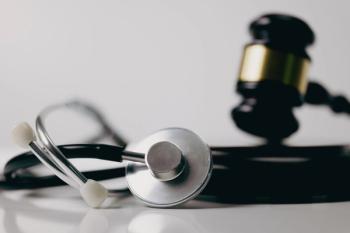
Apple Watch Data Help Predict, Identify COVID-19
Data collected on the Apple Watch may help identify COVID-19.
Heart rate variability metrics collected from an Apple Watch can predict the diagnosis of coronavirus disease 2019 (COVID-19) and identify COVID-19-related symptoms.
The preliminary results, completed on a group of healthcare workers, identified a novel, easily measured physiological metric that could aid in the tracking and identification of COVID-19 infections.
Robert Hirten, M.D., and investigators of the study followed healthcare workers in the Mount Sinai Health System as they used the wearable and a custom Warrior Watch Study app to see if the data collected would help identify and predict the disease and related symptoms.
The primary goal of the study was to determine whether changes in heart rate variability could differentiate participants who were infected and not infected with COVID-19. Another study goal was to observe if changes in heart rate variability could predict the development of COVID-19 infection prior to diagnosis by a PCR test.
Participants in the study were at least 18 years old, were current employees in the Mount Sinai Health System, had an iPhone Series 6 or higher, and had or were willing to wear an Apple Watch Series 4 or higher. The investigators collected daily symptoms including fever and chills, feeling tired or weak, body aches, dry cough, sneezing, runny nose, diarrhea, sore throat, headache, shortness of breath, loss of smell or taste, itchy eyes, none, or other.
All participants downloaded the Warrior Watch app to complete eligibility questionnaires and sign a consent form. The app included daily survey questions which captured COVID-19-related symptoms, symptom severity, COVID-19 nasal swab PCR test results, serum antibody test results, and daily patient care-related exposure. The Apple Watch was worn for a minimum of eight hours per day.
The wearable was connected through Bluetooth to the participant’s iPhone. The watch had an enhance photoplethysmogram optical heart sensor that combined a green light-emitting diode paired with a light-sensitive photodiode generating time series peaks that correlated with the magnitude of change in the green light generated from each heartbeat. Heart rate variability was calculated from the time difference between heartbeats, classified as the interbeat interval. The Apple Watch and the Apple Health app automatically calculated heart rate variability using the standard deviation of the interbeat interval or normal sinus beats.
The data collected through the watch were characterized by a circadian pattern, a sparse sampling over a 24-hour period, and nonuniform timing across days and participants.
Overall, the team enrolled 297 participants between April 29 and Sept. 29, 2020. The median age was 36 years old and a majority (69.4%) were women. Of those who participated, 6.7% reported having a positive PCR test prior to enrollment and 9.4% had a positive blood antibody test prior to the study. There was a median follow-up of 42 days and a median of 28 heart rate variability samples were obtained for each participant.
The mean amplitude of the circadian pattern of the standard deviation of the interbeat interval of normal sinus beats differed between participants with and without COVID-19 (P=.006). The amplitude of the pattern differed between participants during the seven days before and the seven days after a COVID-19 diagnosis compared to the same metric during uninfected time periods (P=.01). There were significant changes in the mean amplitude of the pattern of the standard deviation of the interbeat interval of normal sinus beats between the first day of reporting relating symptoms compared to all other symptom-free days (P=.01).
The study, “








































